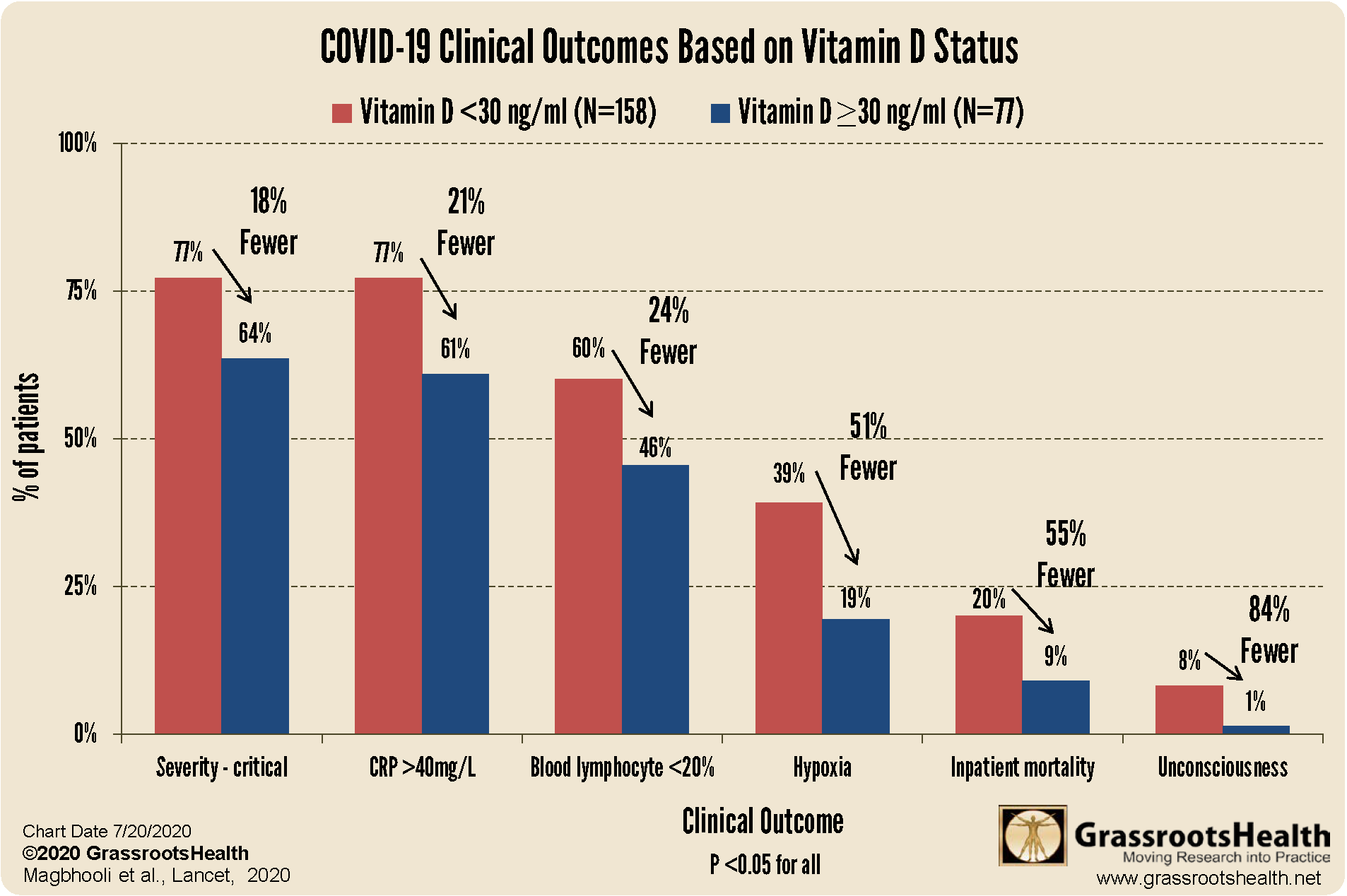Published on February 12, 2021
Video Friday: The math and science used to determine recommended vitamin D serum levels and supplementation amounts, and where the IOM got it wrong
It’s Video Friday! Today’s video titled What Serum Level Should We Target, for What? was presented by Keith A. Baggerly, PhD – a biostatistician, cancer researcher, and “numbers geek” – at the American Public Health Association Annual Meeting and Expo in November of 2016.
In this video, Dr. Baggerly discusses the math and science used to determine the current recommended vitamin D serum levels and supplementation amounts, and where the Institute of Medicine (now the National Academy of Medicine) got it wrong. The mistakes in calculation led to recommendations that are way too low for public health, leading to widespread vitamin D deficiency even among those receiving medical care and attention.
Please take a moment to watch and share the video along with our detailed information below.
Watch the Video
After watching the video, be sure to make note of our added details below!
What Serum Level Should We Target, for What?
Here is a quick summary of what this video discusses, along with additional information and details about vitamin D:
- If vitamin D, something that could cost as little as $10 per year, could reduce the incidence of cancer by 1/3 or more — why isn’t everyone on board?
- Vitamin D deficiency is a major public health concern. Each individual can only produce enough vitamin D if getting enough sunlight or getting enough vitamin D from a dietary/supplement form.
- It is difficult to get the vitamin D you need from diet alone, and the current recommendations for vitamin D supplementation are too low for the majority of the population — WHY IS THIS, AND HOW DID IT HAPPEN?
- The IOM (now the NAM) determines the US RDA (recommended daily allowance) for nutrients. This recommendation is considered the “golden standard” for medical and government institutions, and influences guidelines used around the world. Detrimentally, the RDA for vitamin D was determined based on a target serum level calculation which contained several mistakes described in detail here, and in the video.
- Only months after the IOM set the target vitamin D level at 20 ng/ml (50 nmol/L), the Endocrine Society determined this recommendation to be incorrect, and instead suggested a target of 30 ng/ml (75 nmol/L). Two high authority groups have disagreed about what the minimum vitamin D level should be since they were implemented in 2010… yet no corrections have been made.
- Two different research groups have since looked at the data used by the IOM (and in correcting the mistakes) concluded that the US RDA for vitamin D should be increased from 600 IU/day to 7,000 IU/day from all sources.
- At what point is toxicity a concern? Toxicity is very rare and difficult to achieve, especially at the levels recommended. In actuality, the body is able to make about 10,000 – 25,000 IU of vitamin D from a single “proper dose” of sun exposure, and vitamin D levels seen among outdoor workers and hunter-gatherer tribes in Africa are in the range of 40-60 ng/ml (100-150 nmol/L).
- When supplementing, however, it is good to know your levels and re-test after increasing supplementation to ensure your target level has been reached, and to avoid toxicity.
- BOTTOM LINE: 20 ng/ml is too low, even for bone health – 30 ng/ml looks reasonable for bone health, with additional benefits at higher levels, especially for cancer. There are no clear signs of active harm at these levels, which are seen as “natural” levels among those outdoors.
- Take action now – and share this important information about vitamin D!
- NOTE: the CMEs mentioned at the end of the video are no longer available, however, you can watch the video recordings of the presentations here.
Are You Getting Enough Vitamin D?
Everyone needs vitamin D! Below is a guide for how much you might need, and who may need more. Your levels can be tested safely at home – order your home test kit today.
By joining the GrassrootsHealth projects, you are not only contributing valuable information to our study, but you are also gaining knowledge about how you could improve your own health through measuring and tracking your nutrient status, and educating yourself on how to improve it. Do you know what your status of vitamin D, omega-3s, and other essential nutrients is? Could your levels be improved? Test now to find out!
 We now have a NEW GIFTING SERVICE that allows you to quickly send ‘Gift Cards’ to friends, family and coworkers who you consider might need immediate access to testing, and to Claim the Joy of Your Health TODAY. Give the gift today!
We now have a NEW GIFTING SERVICE that allows you to quickly send ‘Gift Cards’ to friends, family and coworkers who you consider might need immediate access to testing, and to Claim the Joy of Your Health TODAY. Give the gift today!
What does the Research Say about Vitamin D & COVID-19?
It’s TIME to start saving lives! If you can help PREVENT the majority of the death, it’s time! What’s it costing you/us not to take action NOW?
There is much published research that supports a clear link between vitamin D and COVID-19 showing that higher vitamin D levels are related to:
a decreased risk of testing positive for COVID-19
 increased viral SARS-CoV-2 RNA clearance
increased viral SARS-CoV-2 RNA clearance
better clinical outcomes among patients with COVID-19
decreased risk of death due to COVID-19
Be sure to educate yourself on the benefits and importance of vitamin D for immune health, and take steps to ensure you and your loved ones are getting enough.
You can review all of the COVID-19 and immune health information we have shared on this page.












